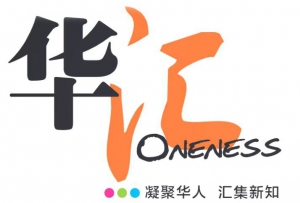印度产妇吃的禁忌
文| Sukanya Pushkarna 图| 作者提供(作者是印度妇女协会前会长)
在印度,人们很重视生育前后过程的每一个阶段。在南印度的一些地方,举行婚礼时就有一个叫Garbadhana的祝福仪式。仪式中由一个小男孩来祝福新夫妇,新婚夫妇在特殊的祈祷仪式中向小男孩磕头,祈求婚后生男孩,传宗接代。
在怀孕期间和分娩后,孕妇的长辈包括奶奶、姑妈、母亲和家婆等都是妇女的主要支柱。她们具备丰富的生育经验与禁忌知识,除了让产妇了解生产习俗之外,还承担家务和照顾婴儿,让产妇得到充分休息,预防产后抑郁症。
手镯叮当响有何含义?
在印度的某些地区,孕妇的娘家会在她怀孕的第七个月举行一个叫做 Seemantam/shaadh/godh bharai 的仪式,让孕妇吃她最喜欢的食物,也让她戴上红色和绿色的玻璃手镯。这些手镯的声音被认为可以传到子宫并安慰胎儿,直到生产时才把这些手镯脱下,交给助产妇。

给孕妇戴手镯,让手镯清脆的碰撞声抚慰胎儿。
在医疗还不发达的年代,生育有一定的危险性,所以在怀孕七八个月这个关键期举行这个仪式,让孕妇满足她或许是最后的愿望,例如对吃某些食物的渴望。从这个时候开始,一些孕妇会住在娘家尽量休息,等到分娩40天后才返回婚房。
在印度教文化中,分娩后被认为是一段相对不“洁净”的时期。在坐月期间,产妇由母亲或者其他女性亲属照顾。平时没机会休息的女性可乘机休息、进补,以恢复活力。坐月期间不得做任何家务或其他活动。
为何要清简饮食?
在拥有 5000 年历史的印度治疗传统阿育吠陀(Ayurveda)中,这一时期被认为是产妇的敏感期,尤其是对消化系统而言,因此需选用简单容易消化的食物。传统上,产妇摄取非常简单但特殊的食物和多种草药饮料,以促进愈合、增强免疫力和改善人乳供应。这包括食用各种豆类、南瓜、胡萝卜、甜菜、绿叶蔬菜及西葫芦等蔬菜,从而滋养身体并促进排便。
不过,食用蔬菜也有禁忌,在分娩后的头三个星期内需避免吃卷心菜、马铃薯和花椰菜等会产气的蔬菜。也需避免吃隔夜的食物,也就是说需多吃新鲜食物,还需按时吃饭,不要过多或过少,以免消化系统负担过重。
产妇的家庭成员或经验丰富的女人也会每天给产妇热油按摩。按摩使用芝麻油、椰油、橄榄油等滋养油。这些按摩油都有不同的特点,比方说:芝麻油被认为可以疏解压力和平衡血压;椰油闻起来很舒服,很快就会被皮肤吸收;橄榄油对皮肤和头发都有好处。按摩后用温水洗澡。
裹腹是印度文化中的常规做法。通常用一条旧的棉纱丽包裹在产妇的腹部。人们相信这样可以轻轻地将胃部肌肉推回,重新定位子宫,并减少妊娠纹。还有一些传统观念,比如产后要盖头避免着凉;不看书、不看电视而避免眼睛太累或头疼。现在仍有印度年轻妇女愿意这样做。
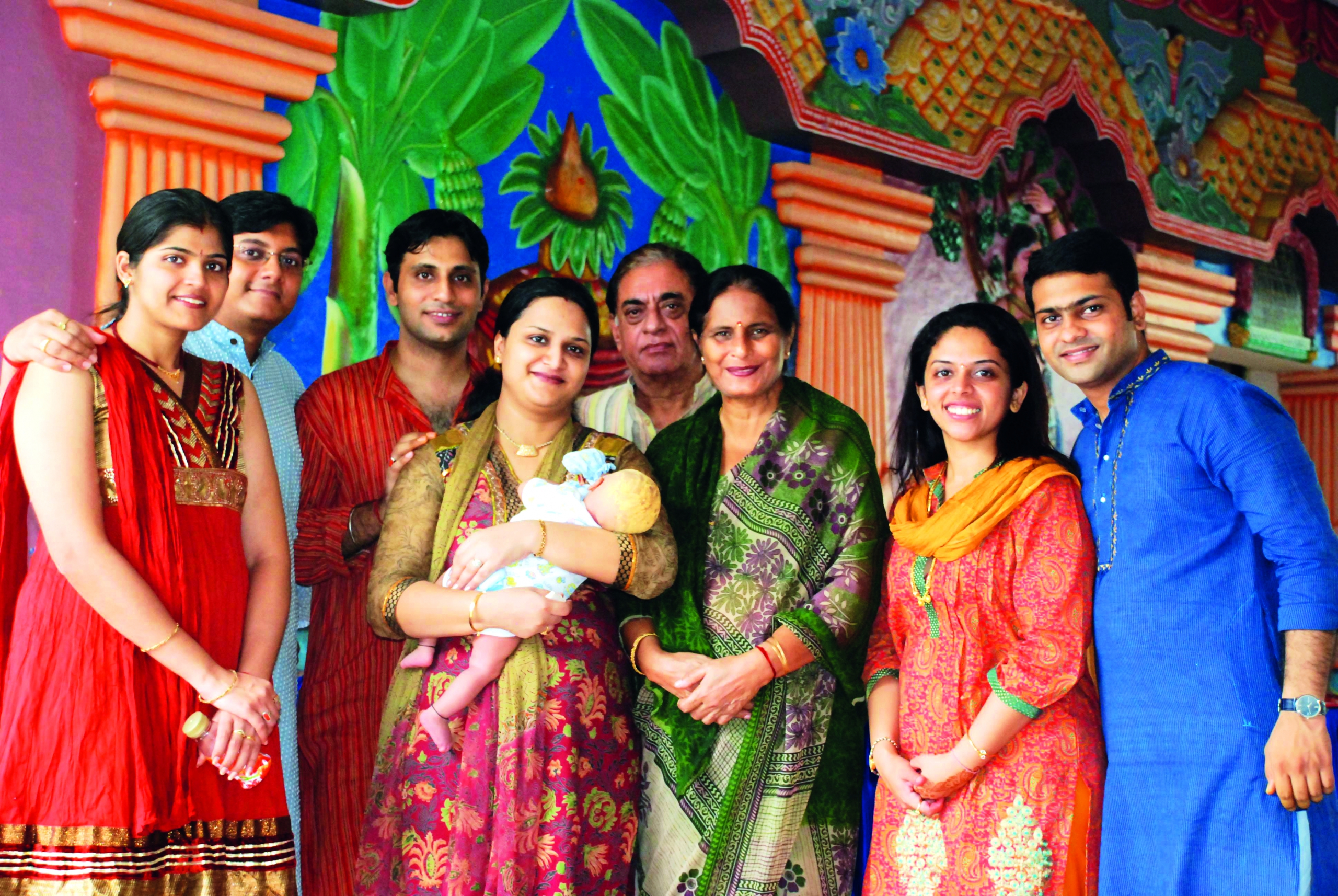
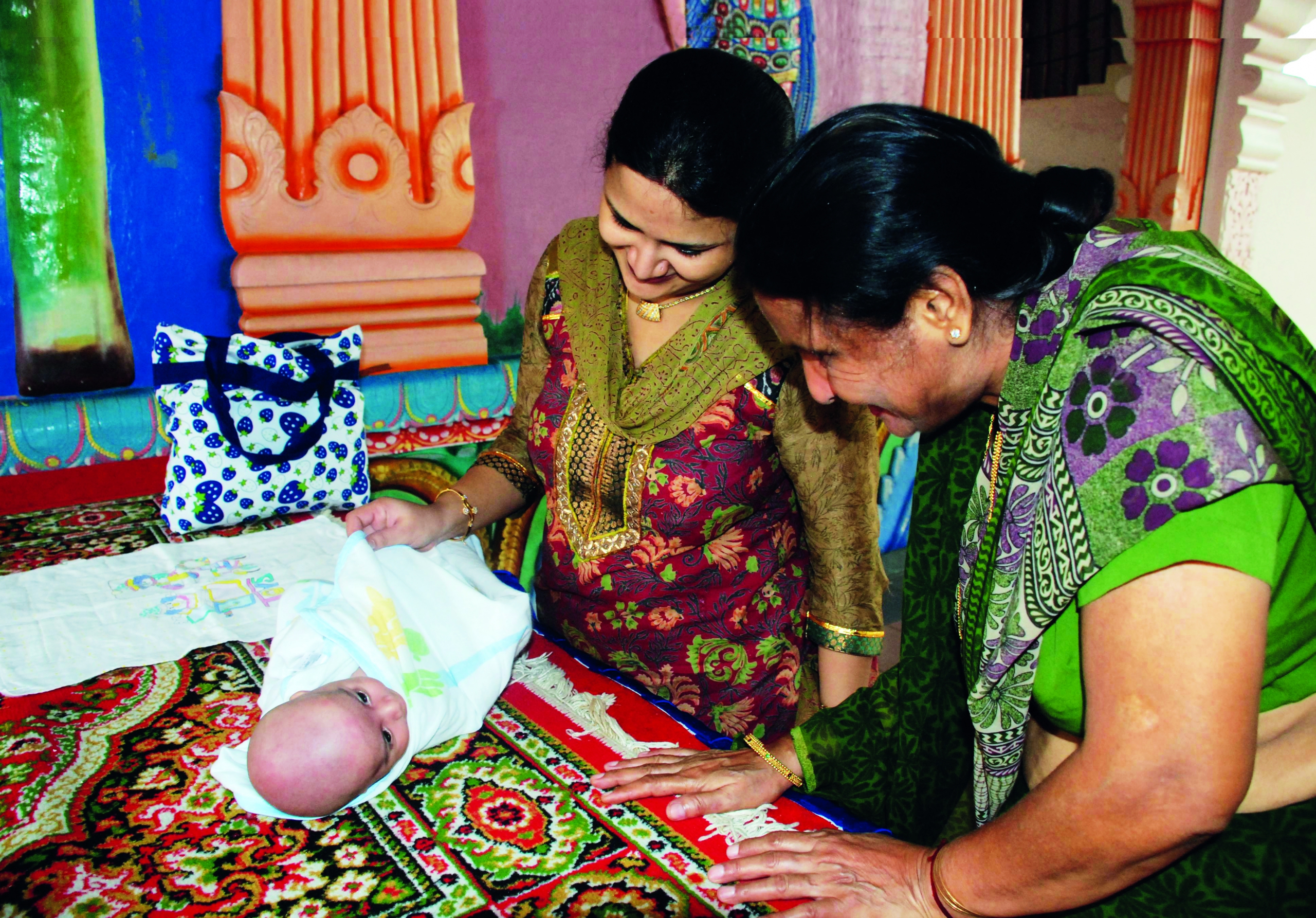
婴儿首年习俗有哪些?
1. 许多印度教和回教社区遵循让婴儿尝到甜食的仪式。六个月后的Annaprashan仪式上,婴儿第一次被喂食谷物。
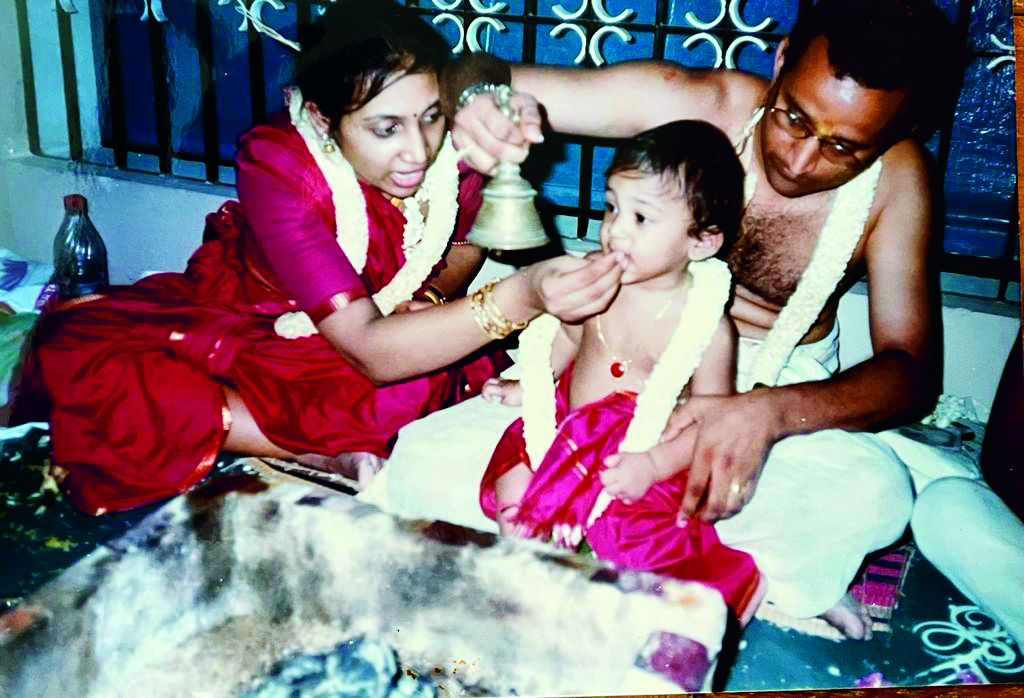
2. 人们相信为婴儿举行剃头(Mundan)仪式,可消除婴儿前世的消极情绪并净化其身体和灵魂。这个仪式一般在孩子一到三岁时举行。
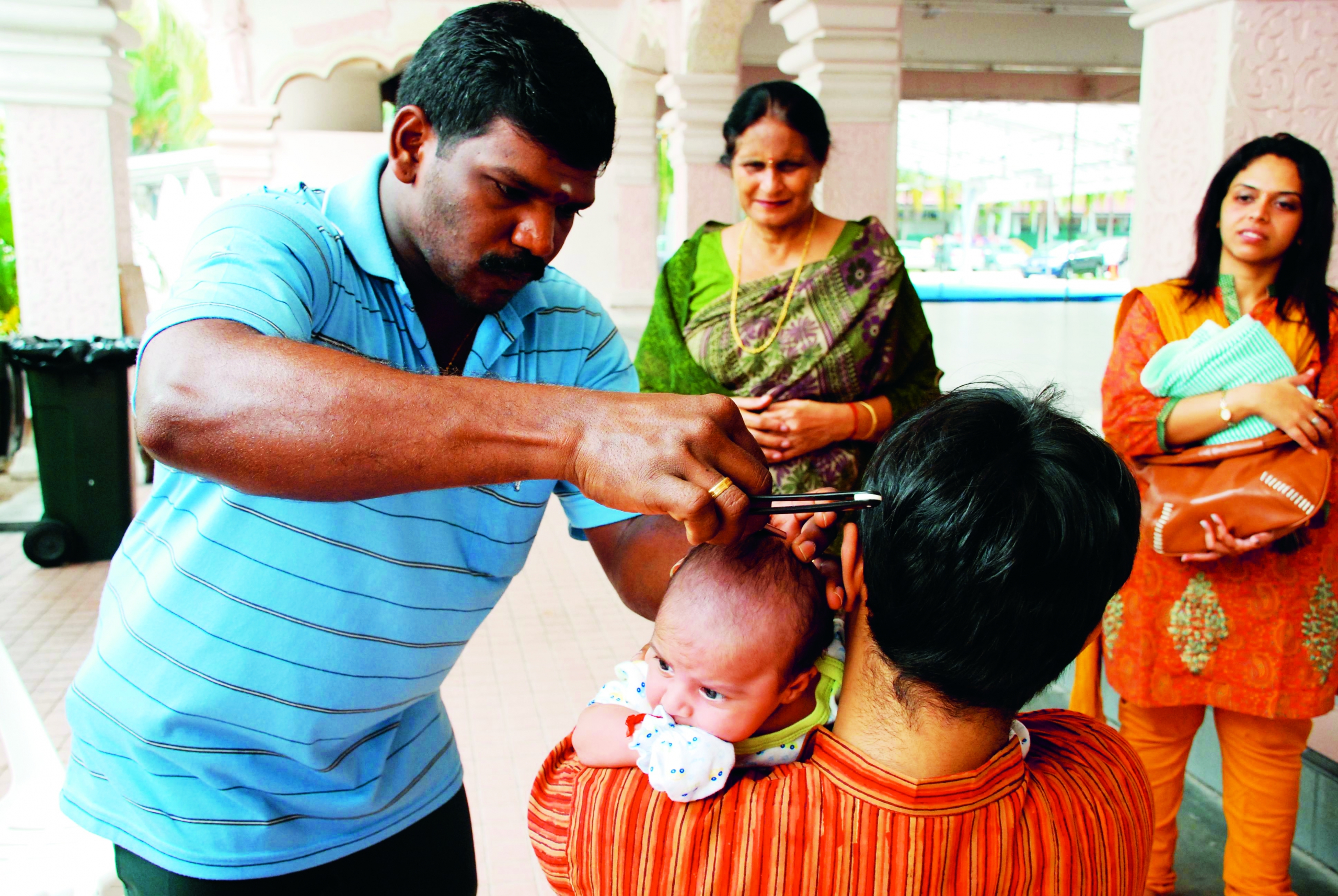
3. 印度教徒在称为 Karnavedha的仪式中,为男婴和女婴穿耳洞,据说可以辟邪!耳环被认为有助于维持人体内生物电流的流畅。一些社区更认为耳朵是重要的穴位,因此穿孔将有助于孩童的健康和发育。
4. 印度不同地方给婴儿取名的仪式各异。比如锡克教徒会带婴儿到锡克庙,宗教师打开 Guru Granth Sahib这本圣书,并随机读出了一节经文。父母跟着取下该页面赞美诗的第一个字母,并用该字母为他们的孩子命名,然后向会众宣布婴儿的名字。
习俗的本地化
新加坡的年轻孕妇会回娘家或让母亲过来照顾她们。怀孕七个月时的特殊仪式,往往由男女双方的妇女一起操办。跟过去明显不同之处在于新爸爸的角色。以前新爸爸和家里的其他男人完全不必参与,但现在年轻夫妇一般自立小家庭,新爸爸也需要帮忙而且也希望有个重要的角色。
本地印族也会按信仰,带孩子到庙宇去给孩子取名字和剃头。随着生活方式的改变,有的风俗习惯也化繁为简。坐月时间未必是40天,新妈妈和婴儿收到的礼物也比以前简单多了。以前是金银手镯、耳环等,如今是名牌衣服或玩具等。
Pregnancy do’s and dont’s for Indian women
Translation: Sukanya Pushkarna
In India, people attach great importance to each stage before, during and after childbirth. In some places in South India, there is a ceremony called Garbadhana when a wedding is held. In the ceremony, a little boy blesses the newlyweds for the birth of a male child from their union. During pregnancy and childbirth, the pregnant woman depends on the elders of her family including her grandmothers, aunts, mother and mother-in-law. They have rich experience in childbirth and also knowledge of the rituals and taboos. In addition to helping the mother-to-be understand childbirth customs, they also undertake some of the housework and care of the newborn, so that pregnant women and new mothers can get adequate rest and avoid health issues like postpartum depression.

In Hindu culture, the postpartum period is considered a relatively “unclean” period. A woman who traditionally doesn’t have the opportunity to rest because of her duties, can take this opportunity to rest and regain her vitality.
What is the meaning of clanging bracelets?
In some areas of India, a pregnant woman’s natal family will hold a ceremony called Seemantam/shaadh/godh bharai in her seventh month of pregnancy. The pregnant woman will be dressed as a bride in ornate clothes and jewelry, she will be offered her favourite foods to eat and she will also be made to wear red and green glass bracelets by the women who attend the ceremony. The sound of these bracelets is thought to be able to reach the uterus and comfort the foetus. The bracelets are traditionally not taken off until the birth when they are handed over to the midwife.
In the age when medical treatment was still underdeveloped, there was always a certain risk of death at childbirth. Therefore, this ritual is held during the critical period of the seventh or eighth month of pregnancy to allow the pregnant woman to satisfy her last wish, such as her craving for certain foods. From this time on, some pregnant women will stay in their natal homes to rest as much as possible, and wait until 40 days after giving birth before returning to their husband’s home.
Why do we need to clean up our diet?
In Ayurveda, a 5000-year-old Indian therapeutic tradition, this period is considered to be a sensitive period for the parturient, especially for her digestive system. That is why simple and easy-to-digest foods are recommended for this time. Traditionally, new mothers also consume very simple but special foods and a variety of herbal beverages to promote healing, strengthening her immunity and improving the supply of breast milk. This includes eating all kinds of beans, pumpkins, carrots, beets, green leafy vegetables and zucchini and other vegetables to nourish the body and promote healthy bowel movement.
New mothers are expected to avoid vegetables that produce gas such as potatoes, cabbage and other cruciferous vegetables like broccoli and also avoid leftovers. New mothers are also encouraged to eat more fresh food, and eat regularly, not too much or too little, so as not to overburden the digestive system.

Family members or other experienced women will also give the new mother a hot oil massage every day. The massage uses nourishing oils such as sesame oil, coconut oil, and olive oil. These massage oils have different characteristics. For example: sesame oil is believed to relieve stress and balance blood pressure; coconut oil smells very comfortable and will be quickly absorbed by the skin; olive oil is good for skin and hair. The massage is usually followed by a warm water bath.
Belly wrapping is a routine practice in Indian culture. An old cotton saree is usually used to wrap the new mother’s abdomen. It is believed that this can gently push back the stomach muscles, reposition the uterus, and reduce stretch marks.
Localisation of customs
Young pregnant women in Singapore may return to their natal homes or let their mothers come over and take care of them in their own homes. The special ceremony at the seventh month of pregnancy is often performed by women of both families. The obvious difference from the past is the role of the new father during and after pregnancy. In the past, the new father and the other men in the family did not have to participate at all.
In Singapore, local Indians and expat women still have the habit of taking their children to the temple for all the rituals of the first year like naming ceremony, and shaving their head etc. according to their family beliefs. With the changes in lifestyles, some customs have also become simpler. The confinement period may not be a full 40 days, and the gifts received by new mothers and babies are much simpler than before. It used to be gold and silver bracelets, earrings, etc., now it is brand-name clothing or toys.
BABY’S FIRST YEAR: WHAT ARE THE CUSTOMS?

1.Many Hindu and Muslim communities follow rituals for babies to taste sweets right after they are born. Then there is a ceremony after six months called annaprashan, where the baby is fed cereals for the first time. This ceremony is quite elaborate in some parts of India.
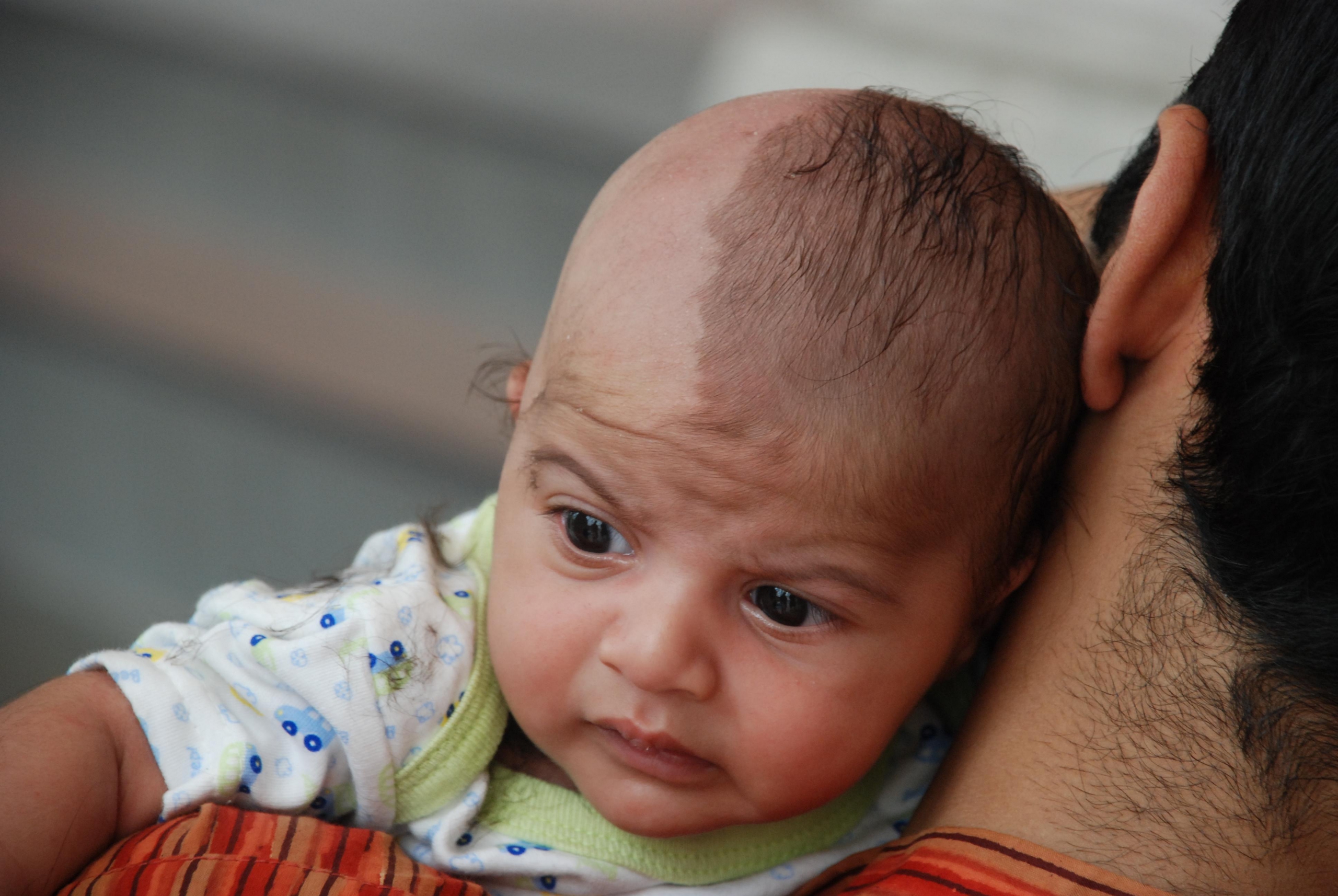
2.It is believed that performing a Mundan or head shaving ceremony for a baby can eliminate the negative emotions of the baby’s previous life and purify its body and soul. This ceremony is usually held when the child is one to three years old.
3.In the ceremony called Karnavedha by Hindus, baby boys and girls have their ears pierced. It is said that doing so can ward off evil spirits! Earrings are believed to help maintain the flow of electricity in the human body. Some Indian communities believe that the ear is an important acupuncture point, so piercing will help the child’s health and development.
4. The rituals for naming babies vary in different parts of India. For example, the Sikhs will bring the baby to the Sikh temple, and the religious teacher will open the holy book called Guru Granth Sahib and read out a verse from it at random. Parents may take the first letter of the verse to name their children. They then announce the baby’s name to the congregation.

